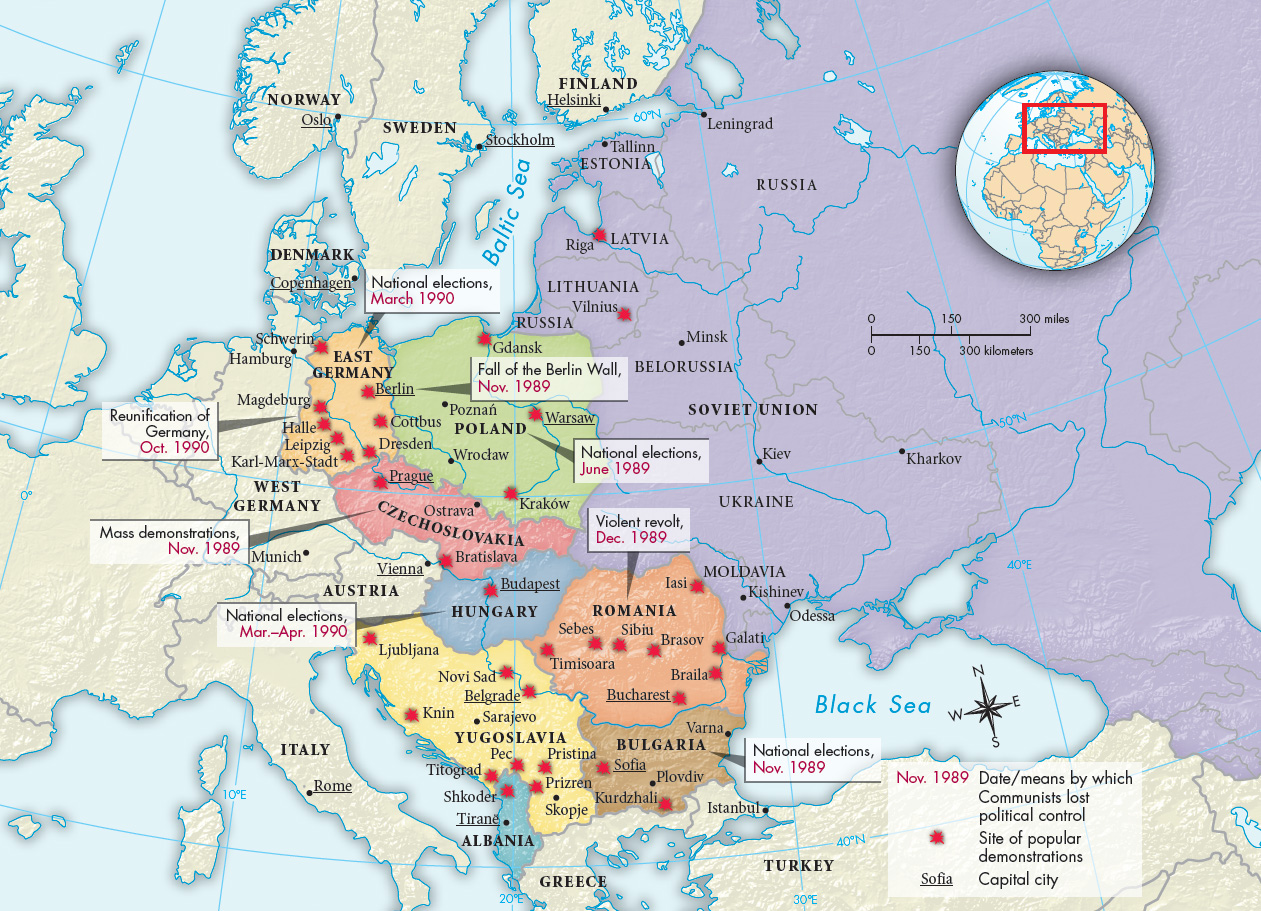A History of Western Society: Printed Page 998
A History of Western Society, Value Edition: Printed Page 1010
The Revolutions of 1989
Why did revolution sweep through the East Bloc in 1989, and what were the immediate consequences?
In 1989 Gorbachev’s plan to reform communism from within snowballed out of control. A series of largely peaceful revolutions swept across eastern Europe, overturning existing Communist regimes (Map 29.2). The revolutions of 1989 had momentous consequences. First, the peoples of the East Bloc gained political freedom after about forty years of dictatorial Communist rule. Second, West Germany absorbed its East German rival, and a reunified Germany emerged as the most influential country in Europe. Third, as Gorbachev’s reforms boomeranged, a complicated anticommunist revolution swept through the Soviet Union and the multinational empire broke into a large Russia and fourteen other independent states. The Cold War came to an end, and the United States suddenly stood as the world’s only superpower.

MAPPING THE PAST
ANALYZING THE MAP Why did the means by which communism was overthrown in the East Bloc vary from country to country? What accounts for the rapid spread of these democratic movements?
CONNECTIONS How did Gorbachev’s reforms in the Soviet Union contribute to the spread of democratic movements in eastern Europe, and how did his actions hasten the end of the Cold War?